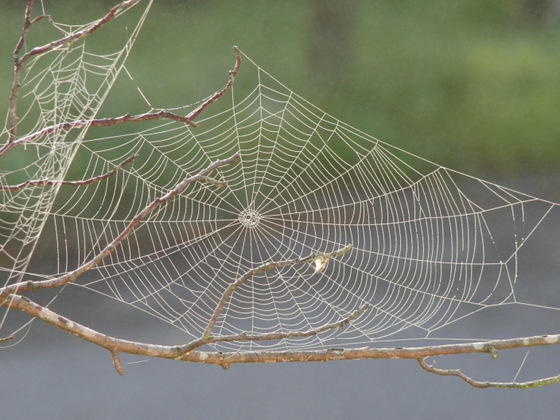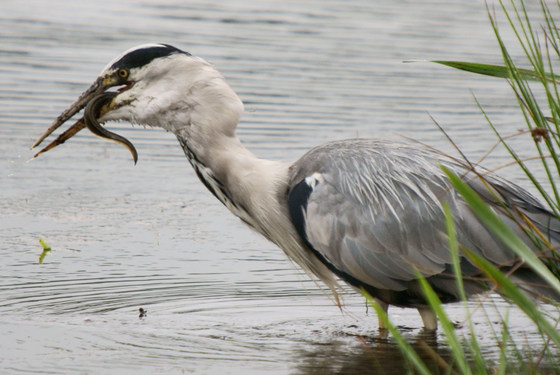Summary
This piece describes a few of the main influences that initially inclined me to write about the topic of wild-animal suffering (WAS). I recount a brief history of the WAS movement through ~2013. (There has been much more happening since 2013 that I haven't chronicled here.)
Contents
Introduction
The WAS movement has become a significant force among effective altruists in recent years. The "Reducing wild-animal suffering" Facebook group has 1370 members as of 30 Aug. 2015. Animal Charity Evaluators, while not focused on WAS, recognizes the issue as important. There's lots of discussion about wild animals on Felicifia, Facebook threads, and sometimes in LessWrong comments. There are now several online videos on the subject. And a new organization called Animal Ethics has been created to conduct research and outreach around WAS on a full-time basis. How did we get to this point?
My first exposure to the topic
In May 2005, upon reading essays by Peter Singer, I realized that animals could suffer and mattered ethically. The implications for eating animals were spelled out in Singer's writings, but like most animal advocates, he didn't really discuss wild animals. The WAS issue began to crop up in various places, though. For example, I read Singer's 1973 response to a question about predation, in which he ultimately defended non-interference on pragmatic grounds. In Practical Ethics, Singer discusses the ethical question of whether to build a dam, and he says (p. 276):
For those utilitarians who accept the total view discussed in Chapter 4, moreover, if the dam destroys the habitat in which the animals lived, then it is relevant that this loss is a continuing one. If the dam is not built, animals will presumably continue to live in the valley for thousands of years, experiencing their own distinctive pleasures and pains. One might question whether life for animals in a natural environment yields a surplus of pleasure over pain, or of satisfaction over frustration of preferences. At this point the idea of calculating benefits becomes almost absurd; but that does not mean that the loss of future animal lives should be dismissed from our decision making.

In July 2005, I read Bernard E. Rollin's Animal Rights & Human Morality, which mentioned that insects might be sentient. I was completely startled to realize this possibility and spent the next several minutes contemplating how much suffering the world would contain if this were true. The spider's webs in my basement began to take on a new, horrible significance. I read more about whether insects could suffer, including Jane A. Smith's excellent "A Question of Pain in Invertebrates."
At one point, I was planning to buy new shoes and wanted to check whether those I wanted to order contained leather. A friend told me this was insane: The chemicals used to produce a shoe had far more impact on the welfare of wild animals than did a little piece of cowhide, she claimed. Again, this made me realize how many animals could be impacted by our environmental choices.
I had grown up an environmentalist my whole life. I was president of the environmental club in my high school for three years, and I had always imagined I would spend my adult life fighting for ecological preservation, perhaps as an environmental lawyer. So when I first thought about animal welfare, I assumed—as most environmentalists and animal-rights advocates do—that preserving wild habitats was good for animal welfare. I wrote an advocacy letter in defense of one of the National Resources Defense Council's "BioGems" with the aim of helping preserve a wild-animal habitat. I also authored an 11-page paper in which I explored what policies we could advocate to best reduce human environmental impacts on wild animals.
Doubts about wild-animal happiness
But I had doubts as well. In a 17 Oct. 2005 letter to Peter Singer, I asked:
Finally, what implications would follow if insects did turn out to be sentient? Might it be possible that the net balance of utility of their lives would be negative, considering that many insects live only for a few days or weeks before enduring what I presume is generally a painful death? If I could choose between not existing or experiencing the life of an insect under the assumed circumstances, I might prefer the former. If insect life were actually a great source of disutility, would a utilitarian not then be obligated to support, for instance, destruction of the rainforest, since that would destroy insect habitat and prevent many painful lives?
I also read Gaverick Matheny and Kai Chan's "Human Diets and Animal Welfare: The Illogic of the Larder," which actually carried out serious calculations of how many animal life-years would be prevented by habitat changes. On p. 586, footnote 5, it said:
For simplicity, we have assumed here that a life-year for a wild animal and a life-year for a farm animal have equal moral value. No doubt arguments could be made to favor either set of animals. Other arguments have been made that neither set of animals has lives worth living—their lives are filled with more misery than happiness (Ng, 1995). In this case, it would be best to adopt a diet that results in the fewest number of animal life-years.
The (Ng, 1995) citation was Yew-Kwang Ng's "Towards Welfare Biology," which was a manifesto for the field of rigorous assessment of wild-animal welfare. It also argued for the "Buddhist premise" that suffering predominates over happiness in nature, based on the fact that most species have more offspring than will survive to maturity.
The general field of environmental ethics began to seem important, so I read several journal articles in that domain, including Jennifer Everett's "Environmental Ethics, Animal Welfarism, and the Problem of Predation." I was not convinced by the positions of most environmental-ethics philosophers.
In June 2006, I was pointed to David Pearce's Hedonistic Imperative. Among other things, it discussed our "Disneyfied conception of Mother Nature" and the brutality of Darwinian life. This piece helped me see how bad suffering was and may have been one of the last straws helping me see that life in the wild was far below hedonic zero on average, especially when the pain of death was taken into account.
Throughout summer 2006, I wrote a long, overly complicated mathematical analysis (.tex) of the sign of various human environmental policies for reducing WAS. Some of the content was later expanded into my "The Predominance of Wild-Animal Suffering over Happiness: An Open Problem," first published in 2007. I emailed several environmental-ethics philosophers for comments.
The WAS idea spreads
In early 2008, Oscar Horta happened to write to me in order to ask for my contact information for an essay I wrote on vegetarianism, because he wanted to cite the paper in his monograph, "Questions of Priority and Interspecies Comparisons of Happiness." During our email exchange, I also mentioned my WAS essay, and Oscar agreed that wild animals were an important issue. He discussed WAS with some of his Spanish / Latin American friends, who also became more interested in the topic.
 In fall 2009, one of the friends Oscar had talked to about WAS suggested that the electronic journal Pensata Animal ask animal ethicists for their thoughts on intervention in nature.
In fall 2009, one of the friends Oscar had talked to about WAS suggested that the electronic journal Pensata Animal ask animal ethicists for their thoughts on intervention in nature.
Oscar and I were also interested in starting an organization dedicated to WAS, but I didn't have the time. Oscar began work on it with some friends.
Reaching Facebook
In 2010, I noticed that Facebook allowed people to create groups, so I created one called "Most of the world's animal suffering occurs in the wild." To my surprise, the group grew to have ~70 members in just a few weeks. People posted a few stories of interest, but things eventually died down.
During 2010-2011, discussions continued to pick up on Felicifia and elsewhere about WAS. Two of my WAS essays were translated. I created a two-page WAS pamphlet, and later on, a reader of my site created a VO-style WAS pamphlet.
In March 2012, a friend came across the Facebook group I had created in 2010 and wanted to revive it, since most of the members had been lost when Facebook migrated its format. Membership grew quickly, reaching 100 in just a few months. Discussions became more frequent. I met Adriano Mannino and Lukas Gloor there, and they would later become close collaborators. We renamed the group to "Reducing wild-animal suffering" after a vote.
Where we are today (as of ~2013)
Several friends of mine continued writing about WAS in various venues, and more and more people became familiar with the idea. These days, it's hard to find a seasoned effective altruist who hasn't heard of the topic, although there remain mixed opinions about what, if anything, we should do about it. Many people have expressed interest in volunteering, so I created a page with suggestions. My essays on WAS continue to be translated. Soon, the Animal Ethics website will launch, providing the most comprehensive compendium of writings on WAS to date.
In his talk on "Scientific Charity Evaluation," Robert Wiblin explains:
And even concern for wild-animal suffering is growing quickly. A couple of years ago, there were just far fewer people who cared about this; it was very [much] a niche thing. Now, at least in the effective-altruist movement, it's considered totally normal to care about this. And the number just keeps going up.
Acknowledgements
Many thanks from me and the suffering wild animals to those who helped inspire this movement and who have contributed to its astonishing growth. In particular, a large number of people contributed whom I didn't mention in this essay. I deliberately avoided naming too many people in case some of them didn't want to be called out, but please let me know if you'd like me to add you to this piece.